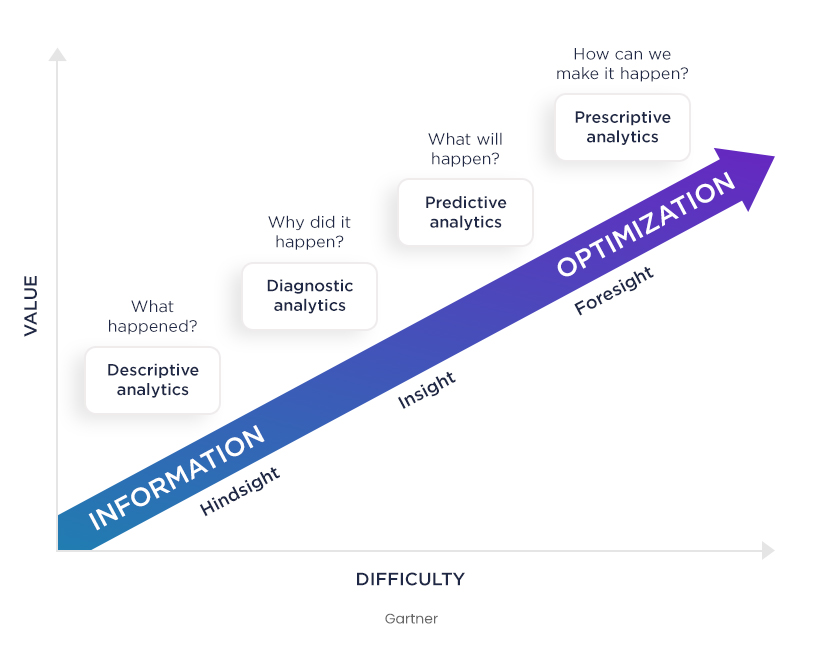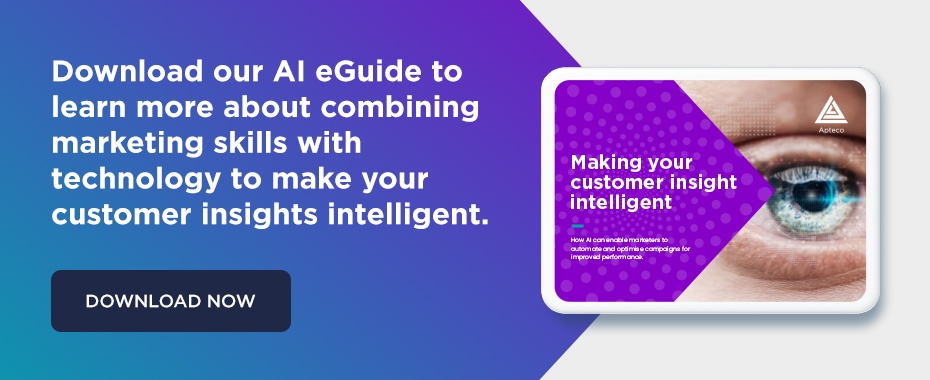What is predictive analytics?
07 Dec 2020 | by Francesca Hose-Berté
Discover how data quality and data sources affect predictive analytics, and five common predictive analytics methods for marketers.
Introducing predictive analytics
Predictive analytics is a forecasting method that aims to identify future events. Analysts begin with the largest and most meaningful amount of data possible, and look for repetitive patterns that enable them to produce reliable forecasts.
Predictive analytics sits between “Insight” and “Foresight” in Gartner’s diagram for the four phases of data analytics maturity.

Predictive analytics can only be successful if the hard foundation work is done before performing any analytics.
Data quality
This is imperative to ensure quality predictive analytics results. To ensure and maintain data quality some standard data housekeeping needs to occur, such as:
- Regular data audits
- Having a plan to remedy errors
- Introducing a robust data acquisition and consolidation approach
Having a business-wide data strategy is not only good practice, it’s also crucial to success. Data projects may have to be introduced to rectify data issues in the first instance, and then an ongoing data strategy can be implemented.
Data sources
You also need to consider your data sources, which directly affect data quality. There will be multiple data sources feeding your data coming from sources such as:
- CRM systems
- Purchase interactions
- Social platforms
- Web forms
Additional data can also be found in databases, for example a D.O.B can give insight into age.
When looking at creating a 360 degree view of your customer data you need to factor in understanding data protection as well as technical challenges. For example, “What can I bring together technically?”. These are all things that need to be considered before you even begin to perform any data analysis.
Predictive analytics in practice: 5 common marketing methods
Here are five examples of data analysis methods that are used throughout marketing to learn more about customers, create target groups, and encourage transactions.
- Profiling. This describes people based on characteristics or behavioural characteristics. A target group is often compared to a larger audience and then the characteristics or behaviours in the target group are looked at to determine whether they are more or less likely to appear in the target group – or there may be no bearing whatsoever. This builds up a picture of who is more likely to appear in the target group compared to your wider database. This helps you identify and target the right people.
- Association analysis (shopping basket analysis). This method looks for patterns where one event is related to another. A great example of this is the shopping cart. The shopping cart analysis determines the purchase probability for each of the items in the shopping cart.
- Decision tree analysis. This method presents decision rules based on data that is graphically represented. The decision tree splits up an analysis set so that more homogeneous groups can be found in the resulting subsets with regards to the classification variables. A statistical model is then based on this, which is designed to help classify new data.
- Next best offer (Best next offer). In this method customers are assigned the products they are most likely to want to buy and these are then presented to them in order to encourage a transaction. The customers purchase history is a required prerequisite as well as the general popularity of the product combination and the statistical significance of the product combination – the propensity for the items to be purchased in unison.
- Cluster analysis. This is a group formation process that looks for patterns in the data. The aim is to identify homogeneous subsets.
There are many predictive analytics methods and approaches that can be used throughout marketing. These methods work closely with AI, and therefore the modern marketing world will only see and use more of them in their marketing departments.
As Martech develops and barriers are broken down these methods will become more readily available to marketers. They will open up wider possibilities for marketing departments to develop sophisticated marketing strategies and tactics.
Download our AI eGuide to learn more about combining marketing skills with technology to make your customer insights intelligent.


